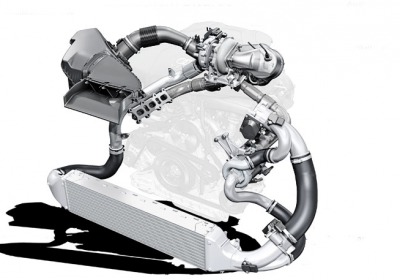CAR tech: how to eliminate turbo lag
Mon, 29 Jul 2013
CAR has tested a new breed of experimental super-diesel that literally leaves current technology standing and may banish turbo lag forever. We drove an Audi A6 3.0-litre V6 prototype fitted with an electric bi-turbo system which delivers a massive dose of torque from idle. The effect is radical, firing the saloon off the line like an R8 when the driver floors the throttle.
What is turbo lag?Diesels beat petrol engines hands down when it comes to efficiency, but that means exhaust temperatures are lower and less energy is available to drive a turbocharger. The current crop of variable geometry turbochargers are designed to compensate for this, but exhaust energy levels have fallen so low that they don’t spin fast enough when the engine is running slowly to provide decent response. When the driver accelerates hard, the turbo takes time to spin up and generate high levels of boost, causing a lag effect.
How does the electric bi-turbo work?Audi boffins from the Advanced Diesel Engine Development department at Neckarsulm have supplemented the usual exhaust-driven turbo with another turbo driven by an electric motor. The electric turbo is positioned between the conventional turbo and the engine’s air intake system and is bypassed most of the time, leaving the conventional turbo to do all the work. But when the engine management system detects the exhaust pressure is too low to give quick response, valves open to bring the electric turbo into play, compressing the intake air for a second time almost instantaneously.
In the A6 prototype, Audi claims a 420bhp power output, 480lb ft from 1450-2800rpm, and emissions of 169g/km of CO2. The combined economy figure? A slightly lower than is usual for diesel 44mpg – but not bad at all for supercar levels of performance.
Will I see it in my car?Yes, but the electric bi-turbo depends on the car industry as a whole adopting a new 48-volt electrical system architecture, which is still five years away. The new, more powerful electrical network will work alongside conventional 12-volt systems, and enable a raft of other new technologies, too.
By Jesse Crosse

